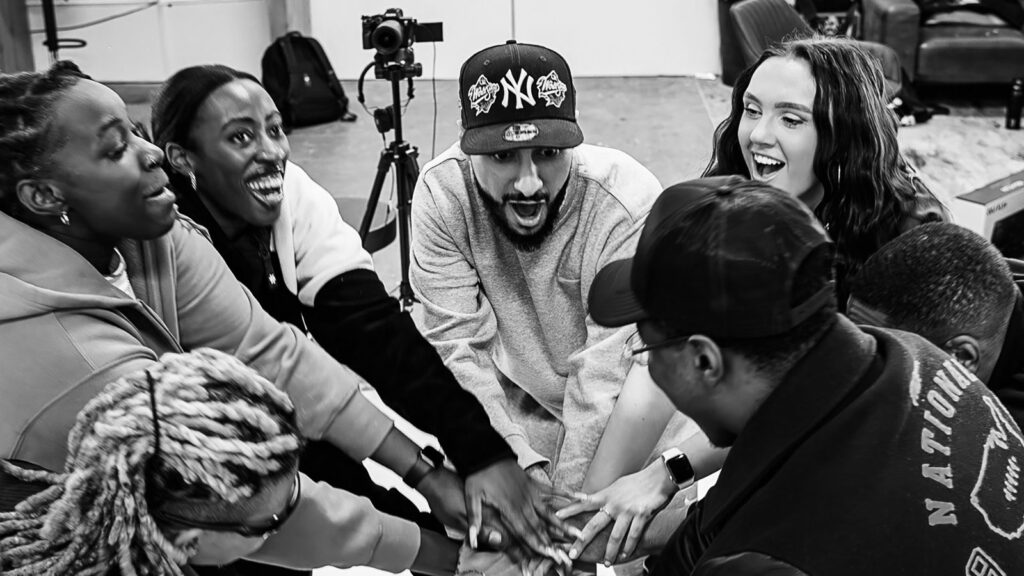We’ve all heard of the vinyl revolution, but lathe cuts may well be the future for up-and-coming acts. A unique format, lathe cuts are made with DIY Japanese tech from the 70’s and other obscure machinery. So, why should they be part of your DIY strategy?
#1 – Lathe cuts give fans a product that feels more personal
There is still something undeniably exciting about music you can hold in your hands. Given that most of our music is just a file on a computer these days, the physical record has become alluring as an alternative and more personal way of consuming music. Rather than being contained to the screen on your smartphone, the double-sided inlay of lathe cuts also allows for maximisation of your record’s artwork: “Records are a conversation from the heart of the artist directly into your home,” explained Andrew of Smalltown America Studios when he spoke to us at London’s Independent Record Label Market. It’s therefore a great marketing strategy for artists and labels to build closer relationships with their fanbase.
#2 – They allow you to cut your own records at a realistic price
Cutting your own vinyl is expensive as you normally have to commit to a minimum run of around 300 copies. Lathe cuts can be done in much smaller quantities, with companies like Audio Geography Studios allowing bands to cut ten 7-inch copies for around £75, a considerably cheaper option than vinyl and a price reasonable to any band who can afford a guitar. A student start-up band, for example, could comfortably chip in together to produce ten lathe cuts with minimal damage to their pockets. Simultaneously, vinyl purists are still left happy with an aesthetically-pleasing product that plays on a regular turntable. Win-win.
#3 – You can start with a smaller volume
As an underground band, selling 300 physical copies is unrealistic. Even if you have the money to produce hundreds of records, the typical new band will not sell such a high volume. Purchasing mountains of vinyl will more than likely result in a loss and leave you with stacks of records collecting dust. “It doesn’t make any sense to spend a thousand dollars to press 300 LPs,” says Wesley Wolfe of the lathe-cutting company Tangible Formats. “Looking at a stack of unsold vinyl is not a confidence builder.” On the other hand, ordering dozens of lathe cuts is a much more achievable and cost-effective method of promoting your music. Bandcamp has an active market for lathe cuts and there does indeed seem to be a small but passionate community of collectors out there. What’s more, you can realistically sell lathes at a decent mark-up (as they can be branded as a limited edition collectors’ item), so you might not need to sell many to recoup your costs. With this model, there’s a good chance you’ll break even.
Conclusion
All things considered, we believe lathe cuts provide the much-needed combination of the classic record’s physical attractiveness with affordability. Whilst you’re not getting the same quality that you could with much heavier investment, lathe cuts still give your fans the unbeatable buzz of hearing your music on a turntable, and at a far more realistic price. “It’s a way of making sure that people fall in love with a band from the very first time that they meet them,” says Andrew of Smalltown America Studios. “These to us are little pieces of art.” We most definitely agree.
How we did it
We don’t just talk the talk, however: we learnt from our own experience of lathe cutting. The day after our interview with Andrew, we called them and made an order for ten copies each of Boyfromthecrowd and Polybeat. We also decided to order another ten copies of Mutant Bird (an artist we really love but for whom we had no prior physical product). The process was extremely simple and quick. After receiving the lathe cuts, we put them up on Bandcamp and brought them to our stall at the ILM, selling them at £15 each (a common price for a lathe cut). We were delighted to discover a strong lathe collector group in New Zealand who took a liking to our products. Needless to say, we soon finished the stock and had recouped our money within three months. In fact, we will probably consider doing even more when getting lathe cuts done in the future. For us it’s a great experimental tool to give physicality to tracks and artists that would otherwise release physicals perhaps only once a year. Now, we’re handing this hack over to you to try, as London punk band Spoilers did recently. It’s great to see the growing popularity of lathe cuts and we’d love to hear how you get on with them!
Technical details
Lathe cuts are etched into 3mm polycarbonate discs, which are typically thicker and more durable than standard records. The discs are lubricated before the cutting process in order to soften their surface and minimise friction. For the highest quality, most cutting companies require .WAV files with a 44.1kHz sample rate and either 16- or 24-bit depth. From here, stereo tracks are reduced to mono. Cutting machines are typically fed via a DAW running through digital-analogue converters. Each is cut separately by a dedicated individual, meaning no two records are the same. Bear in mind that the waiting list can be weeks so, if you’re going for a more do-it-yourself approach, Caolán Austin and Sarah Niamh from Smalltown America Studio recommend you could use a budget converter like an M-Box.
Lathes should be cleaned using a micro-fibre cloth or anti-static brush before playing. In terms of playback, it’s worth bearing in mind that lathes are not identical to the regular factory-pressed record. The mono format means that the cheapness of lathe cutting comes at a slight cost to audio quality. They also can’t exceed more than four minutes in length. This can of course limit the track, meaning it won’t cater to artists that produce long intricate recordings. On the other hand, only producing singles means there’s absolutely no pressure in experimentation. Considering the affordability of lathes, we think it’s a pretty fair trade-off.



